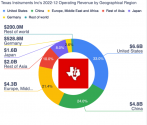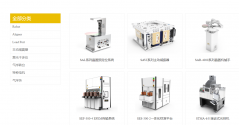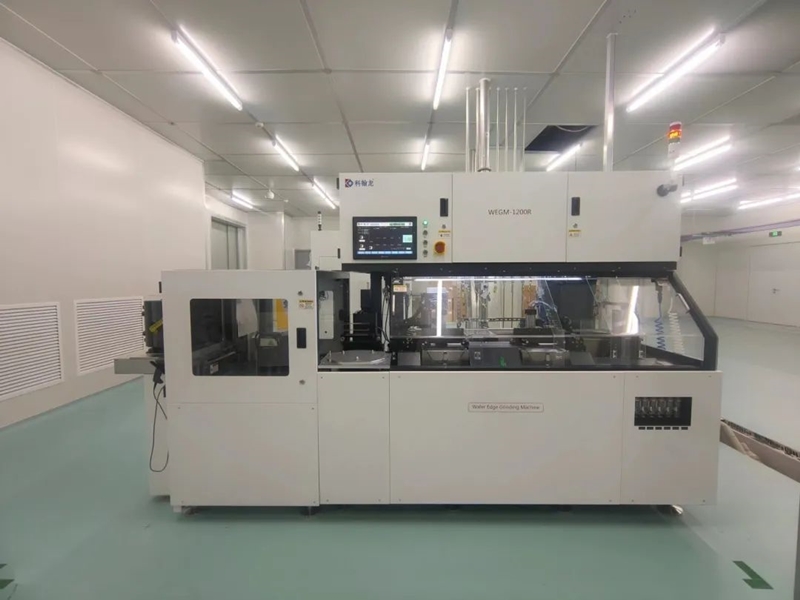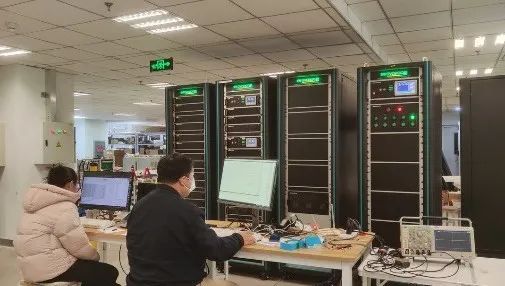This is important because IGBTs are on their way to obsolescence. They'll be replaced by SiC MOSFETs which will be the technology to watch in China.that chart is just taking this one from NE Times. btw, this is not just IGBTs, it's for all power chips
You are using an out of date browser. It may not display this or other websites correctly.
You should upgrade or use an alternative browser.
You should upgrade or use an alternative browser.
Chinese semiconductor thread II
- Thread starter vincent
- Start date
Good luck with that.US-China tech war: second-tier ‘legacy chips’ at forefront of battle for semiconductor supremacy
Chris Miller: "I wouldn’t be surprised if some Western countries begin to either discuss or perhaps even implement restrictions on the use of Chinese chips." I would be.
- In race for cutting-edge technology, the realisation is rising that older-generation chips are still vital to military use as well as cars and consumer electronics
- Slew of US policy actions targeting China expected ahead of American presidential election as rivals pour in resources
1- For now most of the chips that China is producing is for their own home market and/or their own domestic companies products.
2- Even for foreign companies is almost impossible to control the entire electronics market given the complexity of global supply chains, companies are fueled by profits no politics don't expect
3- It will give the Chinese government a pretty good excuse to get attack the market share of these Western analog companies in China, So that alone could be enough to dissuade some government and some companies.

The US made several changes to the playing field which then made the Japanese semiconductor industry less competitive. Initially chip designs could not be copyrighted for example. At best you could patent aspects of the design. This is why the Nintendo NES game console could have an unlicensed MOS 6502 chip clone in it, Ricoh just disabled the patented BCD instructions, and it could be made in Japan and sold worldwide legally back then. The US made copyright law applicable to chip designs in the mid 1980s and forced Japan to accept these new rules. This made unlicensed clones basically impossible.It was a totally different situation with Japan than China. All about GREED. US companies were dominant in DRAM and Japanese were gaining share. Then US DRAM companies like Intel and IBM moved to steppers and yields went to zero. Japanese companies implemented steppers slowly with existing scanners and yield stayed above 80%. US had to stop Japan with stupid tactics.
China meanwhile was starting to make chips and were governed by the Wassanaar Arrangement (2 node generations back, no 300mm), but the US SEMI organisation (which puts on Semicon shows and has equipment conpanies as its members), bulked that it was unfair and sanctioned US congress to eliminate barriers. That opened the door for SMIC and others.
Now these new sanctions against China are misdirected, which I've written extensively about. They are a catalyst for China self sufficiency in chip making and equipment, but are hurting non-Chinese companies instead.
The US also did other things. For example they forced Japan to accept mandatory US chip import quotas that they had to obey. Which made a lot of Japanese designs just simply not profitable because of lower production numbers.
The US also blocked NEC from selling their SX vector supercomputers in the US to keep Cray viable. Just like they block Huawei from selling in the US to protect Apple.
None of that has anything to do with the Wassenaar Arrangement.
The Japanese also made their own missteps. After a highly successful government led initiative, the VLSI project, the Japanese government went all in on 5th generation computers (machine AI) which was a huge flop. At the same time the US made much better EDA tools and semiconductor design methods which made Japanese logic design uncompetitive in the early 1990s. This was partially funded by DARPA's own VLSI Project which among other things funded MIPS and more modern chip design methodologies.
I will just give you an example. Sony designed the Playstation chipset, but then they had to go to an American company, LSI Logic, to optimize the design. Because of better design methodology LSI Logic managed to put what used to be a two chip design into a single chip. This meant that Sony could sell the Playstation for less than Sega could sell the Saturn. The Saturn design needed two chips to have the same compute power and was thus more expensive to fabricate.
Last edited:
Shengtuo Semiconductor completed Pre-A+ round of tens of millions of financing
Suzhou Shengtuo Semiconductor Technology Co., Ltd. completed the Pre-A+ round of financing in January 2024, with the financing amount of this round being tens of millions of yuan.
This round of financing was led by Dongfang State-owned Assets. This is also the second time that Shengtuo Semiconductor has received strategic investment from industrial capital after completing the Pre-A round of financing in May 2023.
Shengtuo Semiconductor is located in Wujiang District, Suzhou, and has subsidiaries in Shanghai, Beijing, Shenzhen and Wuhan. It is engaged in the research and development, design, production, sales and technical services of key components and system-level products in the field of semiconductor manufacturing equipment. Shengtuo Semiconductor is a technology-leading company. Through continuous innovation and technological breakthroughs, the company continues to launch disruptive technical solutions in the fields of EFEM pre-modules, active vibration isolators and ultra-precision motion control, dual frequency interferometers, winning high praise from customers. recognized and widely praised by the market.

Even without considering China, there is momentum in the industry to shift away from CUDA and NVDA, their monopoly in that framework is becoming bottleneck in the AI industry.I mean it should be obvious. The major issue for Nvidia is that it is not allowed to compete in China due to its own govt, so all the AI tools and framework will now shift focus away from CUDA and onto being more compatible with Ascend. That was always the biggest advantage for Nvidia.
Beijing E-Town semiconductor equipment enterprises sprint for a good start
"In 2023, our company's sales increased by 2.2 times year-on-year, and tax payments increased by 1.8 times year-on-year. Sales and tax payments have both doubled for three consecutive years," revealed Wang Xiangyang, deputy general manager of Beijing KHL Semiconductor Equipment Technology Co in Beijing E-Town.
Due to this critical period of sprinting for a strong start in the first quarter, the company's production lines are running at full capacity to ensure timely delivery of key orders.
Entering the testing production line of KHL, engineers are conducting various tests such as wafer edge grinding and chamfering equipment docking with cranes and AGV (Automatic Guided Vehicles), a continuous operational marathon of equipment and product processing effects to ensure that each piece of equipment is delivered on time with high quality.
"This is fully automatic wafer edge grinding and chamfering equipment that can achieve processing of 12-inch wafers without manual intervention throughout the process. The equipment is stable and produces high-precision products," said Dong Dexiang, product manager of KHL, pointing to a large-size piece of wafer edge grinding and chamfering equipment.
Wafer edge chamfering equipment is indispensable for the production of wafer bonding pieces, power devices, and other processes. There is a strong demand in the market for this processing equipment.
After two years of efforts, KHL had broken through the hierarchical chamfering technology and developed China's first fully automatic wafer hierarchical chamfering equipment with complete independent intellectual property rights, software source code, and original design drawings by the end of 2022, filling the gap in China's wafer hierarchical chamfering process equipment.

Currently, large-size wafer edge grinding and chamfering equipment and large-size wafer coding equipment developed and produced by the company have been officially accepted by companies such as Huawei Technologies Co, and have continuously received batches of new orders.
"Taking root in the innovative soil of Beijing E-Town and benefiting from its excellent business environment, KHL has achieved rapid and high-quality growth," said Wang Xiangyang.
With the continuous growth of sales brought by mature products and rapid market demand, in 2024, KHL plans to further expand production plants and cleanrooms, and enhance its research and development capabilities as well as production and delivery speed.
'E-Town-made' grid simulator completes overseas delivery
The PAS120 Switched SiC High-Performance Quadrant Power Amplifier independently developed by Ponovo Power Co in Beijing E-Town, has completed overseas delivery. This is a domestically and internationally leading grid simulator in terms of technology.
At first glance, the power amplifier looks like three large black cabinets.
"Don't underestimate it. This is currently the best-performing switched SiC (Silicon Carbide) quadrant power amplifier with the highest power level and power density in China. It consists of power cabinets, amplifier cabinets, and soft-start cabinets, and is the most critical equipment for power hardware in environmental simulation," said Li Jun, the manager of the R&D Management Department of Ponovo Power.
the power amplifier acts like a special controllable power source, simulating real grid operating conditions such as microgrids, grid anomalies, and grid harmonics and meeting the needs of industries such as active distribution networks, electric vehicles, energy storage, aviation, and rail transportation in power hardware environmental simulation and testing.
Facing the blank market of high-end detection equipment, Ponovo Power overcame challenges such as high switching frequency, low power consumption, overload resistance, and software control over a period of two years.
Finally, this January, they successfully developed this product, which has a maximum power of 120 kW, allowing users in industries such as active distribution networks and electric vehicles to detect product defects and identify performance boundaries through abnormal fault injection before the official deployment of the product.
At the end of this November, the PAS120 Switched SiC High-Performance Quadrant Power Amplifier completed factory acceptance at an international customer's facility and began to enter the overseas market.

"To complete on-site delivery, based on the new requirements put forward by the other party in control software, protocol interfaces, etc., we coordinated the power, software, digital, structural, and production departments in less than half a month to complete all rectifications and carry out factory testing and shipment," added Li.
In the future, focusing on the intelligent detection field, Ponovo Power will continue to inject new impetus into the industry's development through independent innovation, helping China achieve high-level technological self-reliance and accelerating formation of new productive forces.
I will also add that Intel's lawsuit against NEC's V20/30 processors (NEC's own 8088/8086 compatible chips) meant that their successor, the V60, was not 386 compatible and thus much less successful in the market because less software could run on it.
Last edited:
This describes the design of the Playstation chipset.
"Sony concluded that the future of video games lies with proven CD-ROM technology, 32-bit game engines driven by powerful RISC microprocessors, photographic-quality image compression technology, and high-resolution, fast graphics. Sony had designed a system that met those specifications: the Sony PlayStation. With its television-quality 3D graphics and instant reaction to player commands, Sony's new system outperformed everything on the market.
The problem was the game system electronics consisted of several printed circuit boards that contained hundreds of ICs and occupied several shelves of an electronics rack. Clearly, it couldn't go to market in that configuration. To be marketable, the PlayStation had to be shrunk to a size that a child could handle and had to be introduced with a retail price in the $300-$500 range. It had to be delivered in Japan by Christmas of 1994 and in the U.S. and Europe in mid-1995.
...
To meet the size, performance and price constraints, the PlayStation CPU had to fit on a single chip. That meant integrating a 32-bit MIPS RISC microprocessor, a 3D graphics engine and a JPEG decoder, together with the necessary glue logic and memory blocks.
...
Sony Computer Entertainment selected LSI Logic as that ASIC partner. It was spring of 1993 when a team of Sony and LSI Logic engineers went to work on the task. First prototypes had to be delivered by the end of the year.
LSI Logic's CoreWare® methodology could put the entire PlayStation CPU on a single chip. Other alternatives would need at least two chips. The CoreWare library included a MIPS R3000 core and a JPEG core that would be used in the PlayStation CPU chip with only minor modifications. And LSI Logic's state-of-the-art 0.5-micron fabrication facility had the capacity to manufacture production chips in the volume that Sony needed.
That left the graphics engine, DMA controller, I/O and bus controllers as the primary development tasks. LSI Logic's applications engineers, both in the U.S. and in Japan, had the experience necessary to quickly generate these circuits to meet Sony's specifications.
...
The development team consisted of engineering teams in the U.S. and in Japan. Each team included both LSI Logic and Sony engineers, with some LSI Logic engineers working at Sony and some Sony engineers working at LSI Logic.
Sony's engineers provided the systems expertise, defining the specifications that LSI Logic's team then implemented in silicon. Development proceeded rapidly, and first prototypes were delivered within schedule. First prototypes were functional, allowing the design teams to concentrate on refining the design rather than on fixing design flaws and allowing game title development to commence early.
...
Despite its complexity, the PlayStation CPU chip does not strain the integration capability of the 500K process, nor does it tax the 500K's performance capabilities. Employing LSI Logic's CoreWare® methodology, Sony and LSI Logic engineers were able to create a design in months that would have been inconceivable just two years ago. The result demonstrates the benefits of the CoreWare methodology for large designs."
"Sony concluded that the future of video games lies with proven CD-ROM technology, 32-bit game engines driven by powerful RISC microprocessors, photographic-quality image compression technology, and high-resolution, fast graphics. Sony had designed a system that met those specifications: the Sony PlayStation. With its television-quality 3D graphics and instant reaction to player commands, Sony's new system outperformed everything on the market.
The problem was the game system electronics consisted of several printed circuit boards that contained hundreds of ICs and occupied several shelves of an electronics rack. Clearly, it couldn't go to market in that configuration. To be marketable, the PlayStation had to be shrunk to a size that a child could handle and had to be introduced with a retail price in the $300-$500 range. It had to be delivered in Japan by Christmas of 1994 and in the U.S. and Europe in mid-1995.
...
To meet the size, performance and price constraints, the PlayStation CPU had to fit on a single chip. That meant integrating a 32-bit MIPS RISC microprocessor, a 3D graphics engine and a JPEG decoder, together with the necessary glue logic and memory blocks.
...
Sony Computer Entertainment selected LSI Logic as that ASIC partner. It was spring of 1993 when a team of Sony and LSI Logic engineers went to work on the task. First prototypes had to be delivered by the end of the year.
LSI Logic's CoreWare® methodology could put the entire PlayStation CPU on a single chip. Other alternatives would need at least two chips. The CoreWare library included a MIPS R3000 core and a JPEG core that would be used in the PlayStation CPU chip with only minor modifications. And LSI Logic's state-of-the-art 0.5-micron fabrication facility had the capacity to manufacture production chips in the volume that Sony needed.
That left the graphics engine, DMA controller, I/O and bus controllers as the primary development tasks. LSI Logic's applications engineers, both in the U.S. and in Japan, had the experience necessary to quickly generate these circuits to meet Sony's specifications.
...
The development team consisted of engineering teams in the U.S. and in Japan. Each team included both LSI Logic and Sony engineers, with some LSI Logic engineers working at Sony and some Sony engineers working at LSI Logic.
Sony's engineers provided the systems expertise, defining the specifications that LSI Logic's team then implemented in silicon. Development proceeded rapidly, and first prototypes were delivered within schedule. First prototypes were functional, allowing the design teams to concentrate on refining the design rather than on fixing design flaws and allowing game title development to commence early.
...
Despite its complexity, the PlayStation CPU chip does not strain the integration capability of the 500K process, nor does it tax the 500K's performance capabilities. Employing LSI Logic's CoreWare® methodology, Sony and LSI Logic engineers were able to create a design in months that would have been inconceivable just two years ago. The result demonstrates the benefits of the CoreWare methodology for large designs."
On February 24, Times Chip Storage in Huai’an, Jiangsu Province suddenly issued an announcement stating that Times Chip Storage would be reorganized after being ruled by the Huaiyin District People’s Court of Huai’an City. After the reorganization, Huaxinjiechuang Integrated Circuit Manufacturing (Guangdong) Co., Ltd. will hold 100% of the equity of Times Core. The wafer fab will be transformed into a semiconductor foundry. Its products include but aren't limited to DDIC, PMIC and high-reliability memory chips and RF chip, etc.
